Who Benefits from Bill 5? - Part 2
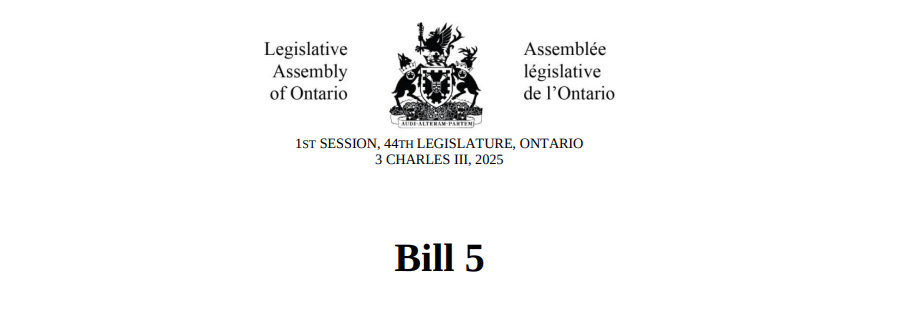
Special Economic Zones and Ottawa lends a hand
Last week we published part one of this article, focused on who has received special favours from this legislation, and other potential beneficiaries related to energy and critical minerals.
Special Economic Zones
Much of the outrage about Bill 5, particularly from Indigenous communities and leaders, is about the creation of Special Economic Zones. Bill 5 gives the Lieutenant Governor authority to declare an area as a Special Economic Zone, exempting companies or projects in those zones from laws, regulations and local rules. The Minister can, at his or her discretion, choose to make companies or projects “trusted proponents” or “designated projects”.
Put another way, this gives the premier and cabinet - not the legislature - power to decide which laws apply in certain areas, to choose where those laws apply, and to decide who gets special exemptions. It removes lawmaking powers from elected representatives and gives it to a small group of decision-makers. Of course, the government protected itself from any related legal action as part of the legislation.
If passed, the government can exempt anyone, anywhere and any project from any provincial or municipal law, including environmental laws, planning and zoning laws, labour and safety laws, and traffic or trespassing laws. These exemptions can be handed out for any reason, even if the project has nothing to do with economic development or trade with the US.
The bill includes no clear rules or limits on how SEZs are created, or how exemptions are granted. The premier and cabinet have total discretion and no accountability to justify or explain their decisions.
Potential ramifications of this blank cheque on democracy and the law are mind-boggling. Nothing stops the Ford government from making the entire Ring of Fire a SEZ, as they will likely do for Ontario Place. Nothing stops the Ford government from turning entire cities (like Toronto, for example) into a SEZ. If it wanted to do so, the government could turn the whole province into a SEZ.
Environmental oversight is eliminated inside SEZs. Projects would not require public notice or consultation, and would have no accountability for economic impact. From the perspective of Indigenous rights in Ontario, SEZs could be used to bypass the constitutional duty to consult Indigenous communities, and the bill proposes no alternative.
Critics are calling the proposal anti-democratic because it undermines the role of the legislature, allows unequal application of law based on political preference, and sidesteps public consultation and transparency. Bill 5 gives the government unchecked power, and eliminates or weakens protections for the lands, waters and species. It removes rights and safety protections from workers, and it creates a class of favoured individuals and companies who can operate outside the law.
Special Economic Zones are in use in China, India, United Arab Emirates, Poland and the Philippines, and each region has issues with worker rights violations and exploitation, environmental degradation, tax evasion and land theft. Wherever they are found, SEZs are used to weaken labour, environmental and planning standards; bypass public consultation and democratic processes; and encourage land grabs and displacement.
If the government is allowed to establish SEZs, Ford has already indicated he could designate the 401 as a Special Economic Zone. This would fast-track plans to construct a transit and tunnel underneath the massive highway, a plan which the government itself determined isn’t feasible. Nonetheless, if it’s determined as an SEZ, control could be handed over to whomever the government determines to be a trusted proponent.
Who might the government consider a “trusted proponent” to build this fantastical tunnel? An obvious answer would be Strabag, associated with sanctioned Russian oligarch, Oleg Derispaska, who worked closely with Paul Manafort on Russia’s behalf to help Trump. As we wrote last year, Deripaska’s company already has almost a billion dollars of contracts with Metrolinx to dig the Scarborough subway.
Another possible proponent could be The Boring Company owned by Elon Musk. The company's mission is to reduce traffic congestion by building low-cost underground transportation systems, often involving Tesla vehicles in tunnel "loops." The much-hyped company has so far had more projects stalled and cancelled than completed.
Many individuals and corporations already closely associated with the Ford government stand to benefit from SEZs. The entire Greenbelt could be designated an SEZ, as could the highway 413. As we have written before, both of these initiatives stand to enrich a small group of developers who are frequent recipients of gifts from the Ford government, including Silvio De Gasperis, Michael Rice and Mario Cortellucci.
Potential beneficiaries of the establishment of SEZs in Ontario fall into a few categories.
Infrastructure and real estate developers
- Therme Group, which is building at Ontario Place
- French construction giant Vinci Construction, Ellis Don and Aecon, which are involved in public-private megaprojects
- Mattamy Homes, Tridel and SmartCentres which could build on SEZs with no zoning or environmental rules
Automotive and EV manufacturers
- Stellantis EV manufacturing in Windsor
- Volkswagen battery cell factory in St. Thomas
- Tesla
- Magna International
Warehousing, logistics and supply chain companies
- Amazon
- UPS
- FedEx
- Large industrial land developers, like QuadReal, Broccolini and Oxford Properties
Technology and biomanufacturing
- Sanofi, Moderna and Resilience, which have planned expansions in Ontario
- Google/Alphabet, which already abandoned plans for Toronto’s waterfront
- AI companies, data centres and chip manufacturing
Resource extraction and energy infrastructure
- Small Modular Reactor developers like Bruce Power and Ontario Power Generation (OPG)
- Mining and critical mineral companies in the Ring of Fire, like Wyloo and Juno
- Energy transmission and pipeline companies
These sectors are, not at all coincidentally, the same sectors highlighted in Ford’s “Fortress-Am Can” plan. As we wrote last month, Ford’s plan envisions a comprehensive integration of Canada into American economic and military interests, particularly as it relates to critical minerals, oil and gas and nuclear power. It positions this economic integration as key to protecting democracy and fighting tyranny, though it proposes nothing of the sort.
If Fortress Am-Can represents the “what”, then Bill 5 represents the “how.” When it comes to critical minerals, Ford’s focus is getting them out of the ground and to US industry and military as quickly as possible, hopefully bounding over - with American support and pressure - any pesky regulatory requirements, interference from Indigenous communities, or the law. It also seems Ford has a partner in the Carney government.
As we wrote in our earlier article, Ford’s proposals in Fortress Am-Can are mostly under federal jurisdiction. Though Bill 5 offers the premier and cabinet sweeping and undemocratic powers, the Ford government cannot put aside federal laws and regulations.
Fortunately for Ford and the corporations and individuals backing Fortress Am-Can, Prime Minister Carney is singing from a very similar song sheet. As mentioned in the Throne Speech, the Liberal government intends to introduce legislation to identify projects in the “national interest” and provide “up-front regulatory approvals”. Positioned as a “more flexible” regulatory framework, it also - as the Ford government has done - proposes making a designated minister responsible for making these decisions. Like Bill 5, this proposal draws much of the same criticism from environmental groups and First Nations.
At the end of the recent First Ministers’ meeting, the PM and the 13 territorial and provincial leaders released a joint statement to say they had agreed on criteria for what “energy and major infrastructure projects” would be in the “national interest”, doubling down on the idea that extraction industries and “nation building” are one in the same. The idea of making Canada an “energy superpower”, which is central to Fortress Am-Can, is on Carney’s lips too.
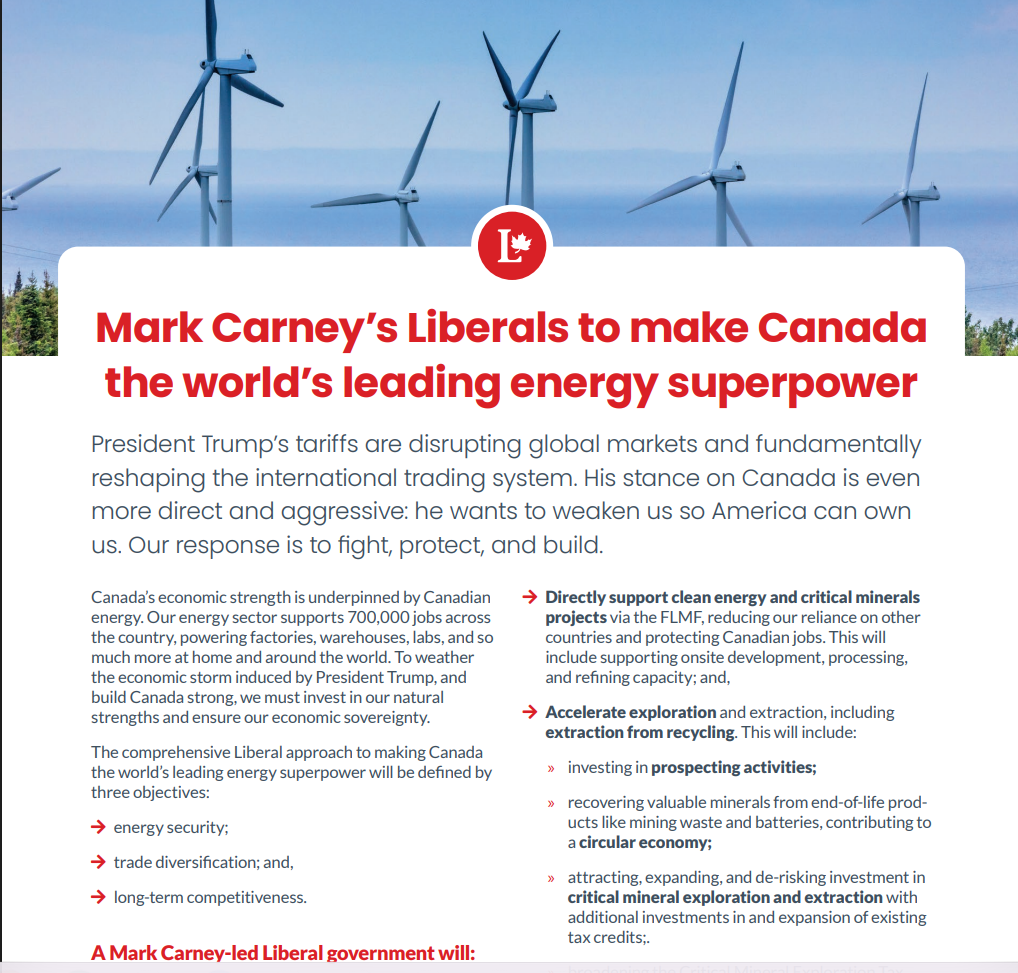
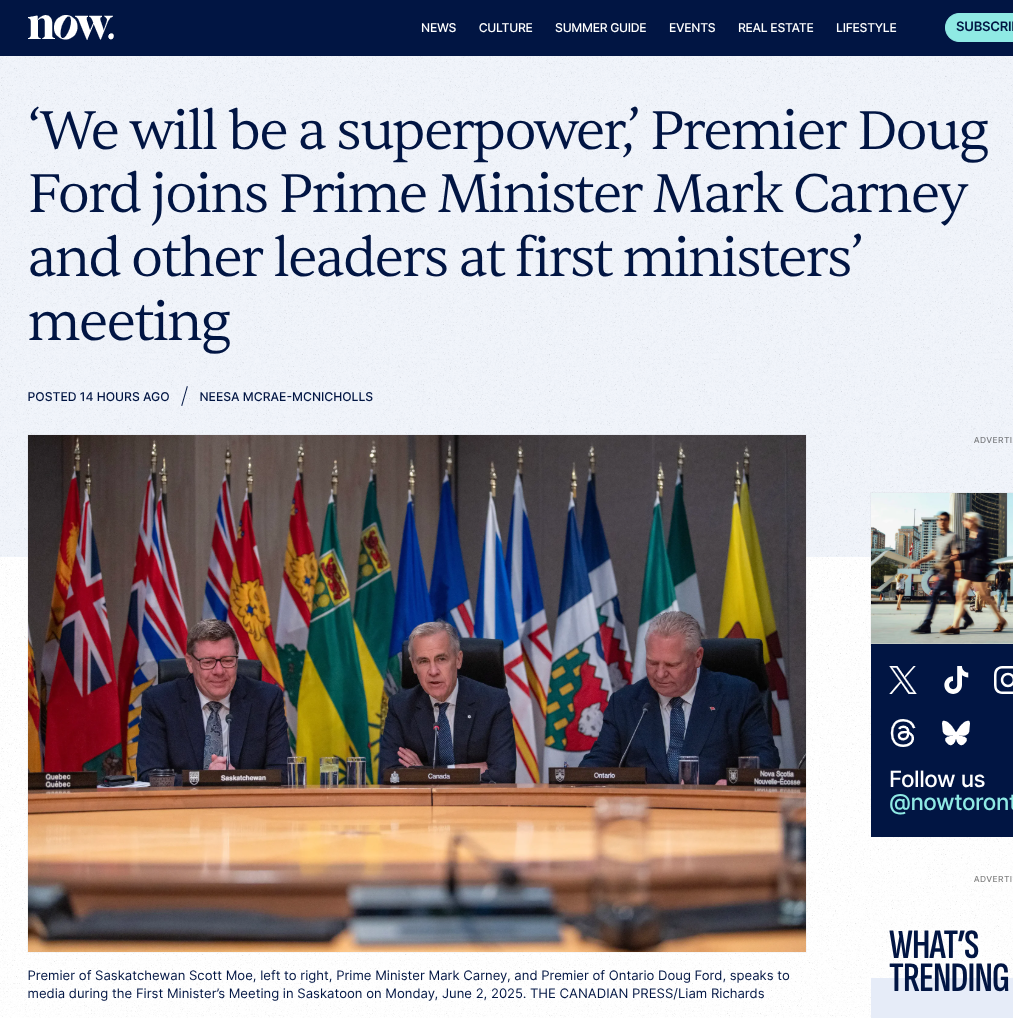
In the days before the First Ministers’ meeting, Ford was already telling the media he intended to put forward “nation-building” projects for federal consideration that he would designate as SEZs.
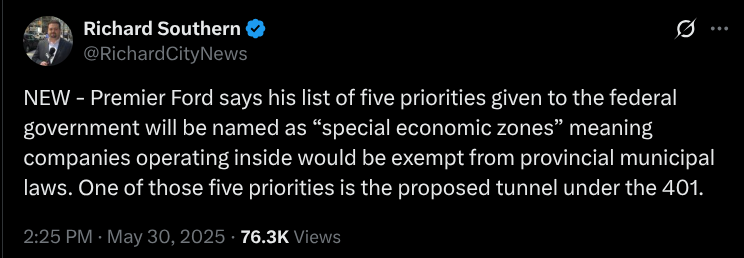
On the heels of the same meeting, while Indigenous leaders were rallying at Queen’s Park to force the government to scrap Bill 5, federal Justice Minister, Sean Fraser, went out of his way to remind First Nations that the federal duty to consult and engage with Indigenous people on major projects does not mean those communities have a veto.
“In most circumstances, I think it demands a very deep level of engagement and understanding of the rights that may be impacted. And to the extent that those rights can be accommodated, we should make every effort to. The explicit nature of a veto — so from my understanding — is that it stops short of a complete veto,” Fraser said in response to the Star’s questions Tuesday.
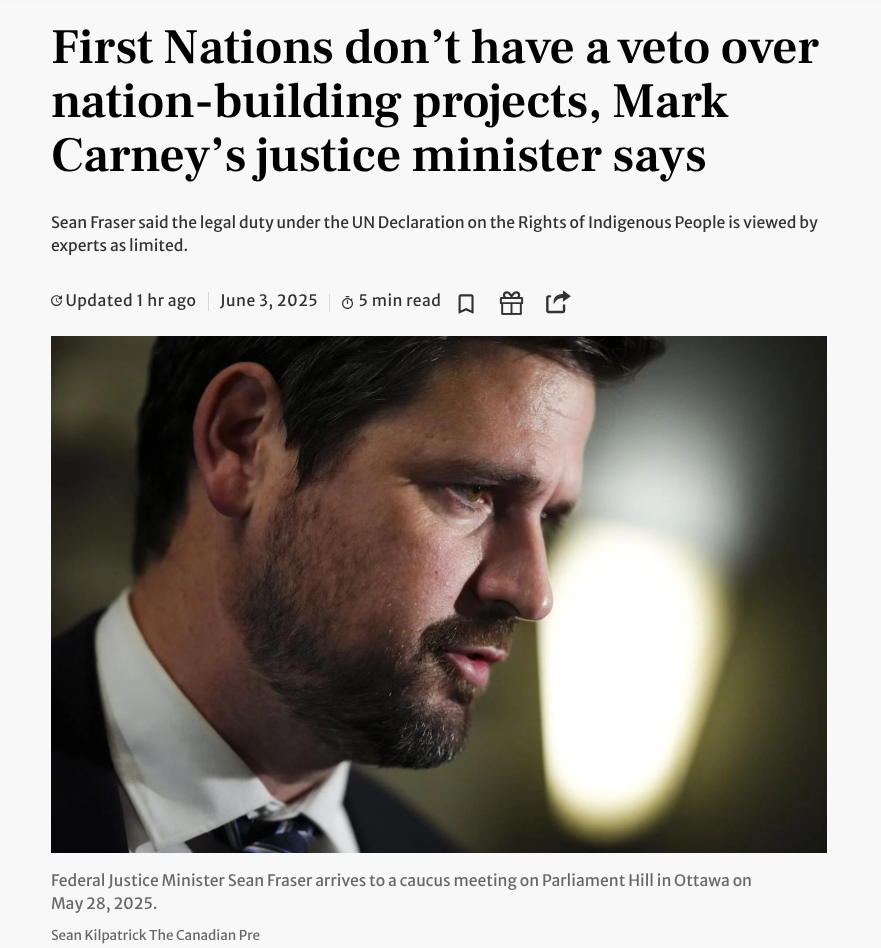
The Assembly of First Nations, in a statement, lumped Ford’s intentions and Carney’s intentions together, reminding both governments of their legal obligations to consult and obtain consent from affected communities.
In their most recent election campaigns, both Ford and Carney positioned themselves as “strong on Trump” and spoke of the need to defend Canada against US tariffs and talk of annexation. Ford performed his “Captain Canada” routine for the entirety of the provincial election campaign, giving far more television news interviews to Fox, CNN and MSNBC than he has given in Canada. Carney, in a hockey jersey, filmed a video with Mike Myers to promote Canadians keeping “elbows up” against American aggression.
Once elected, both men immediately started a balancing act - continuing to position themselves as “tough on Trump” while pushing legislation written specifically for Trump’s ear, American interests, and the interests of Canadian oligarchs and corporations who really do love the idea of being the 51st state.
The law firm Davies, in a bulletin to clients about Bill 5, noted how Bill 5 is “consistent with” the federal government’s “One Window” plan and “One Project, One Review.”

As reported by the Investigative Journalism Foundation late last month, two oil and gas companies owned by Brookfield joined 36 others in signing an open letter to Carney, urging him to speed up resource development by easing regulations and fast-tracking approvals.
In our earlier article on Fortress Am-Can, we wrote about TC Energy’s web of relationships with the Trump administration, and how the company has ambitions to become a “continental” company rather than a Canadian one, making it a strong proponent of Ford’s plan.
TC Energy has many points of influence, and has as much access to Carney as it does to Ford. David MacNaughton, in addition to being the president of Palantir Canada, is also a director of TC Energy. MacNaughton, who is married to Leslie Noble (founder of StrategyCorp and currently an executive at Therme), is a member of the Prime Minister’s Council on Canada-U.S. Relations. The council is composed of “leaders in business, innovation, and policy” to advise the Prime Minister “during this crucial time in the Canada-U.S. relationship.”
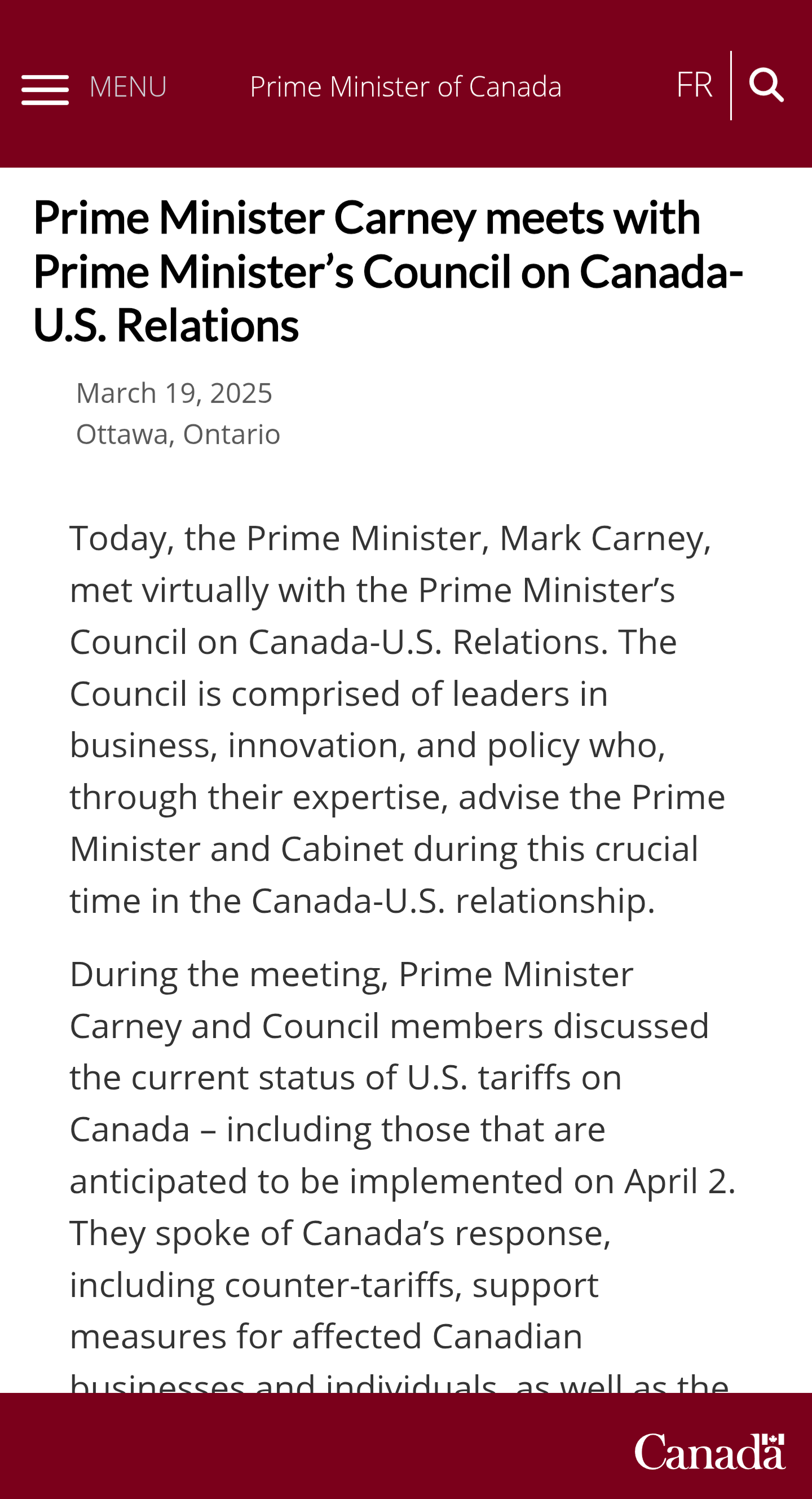
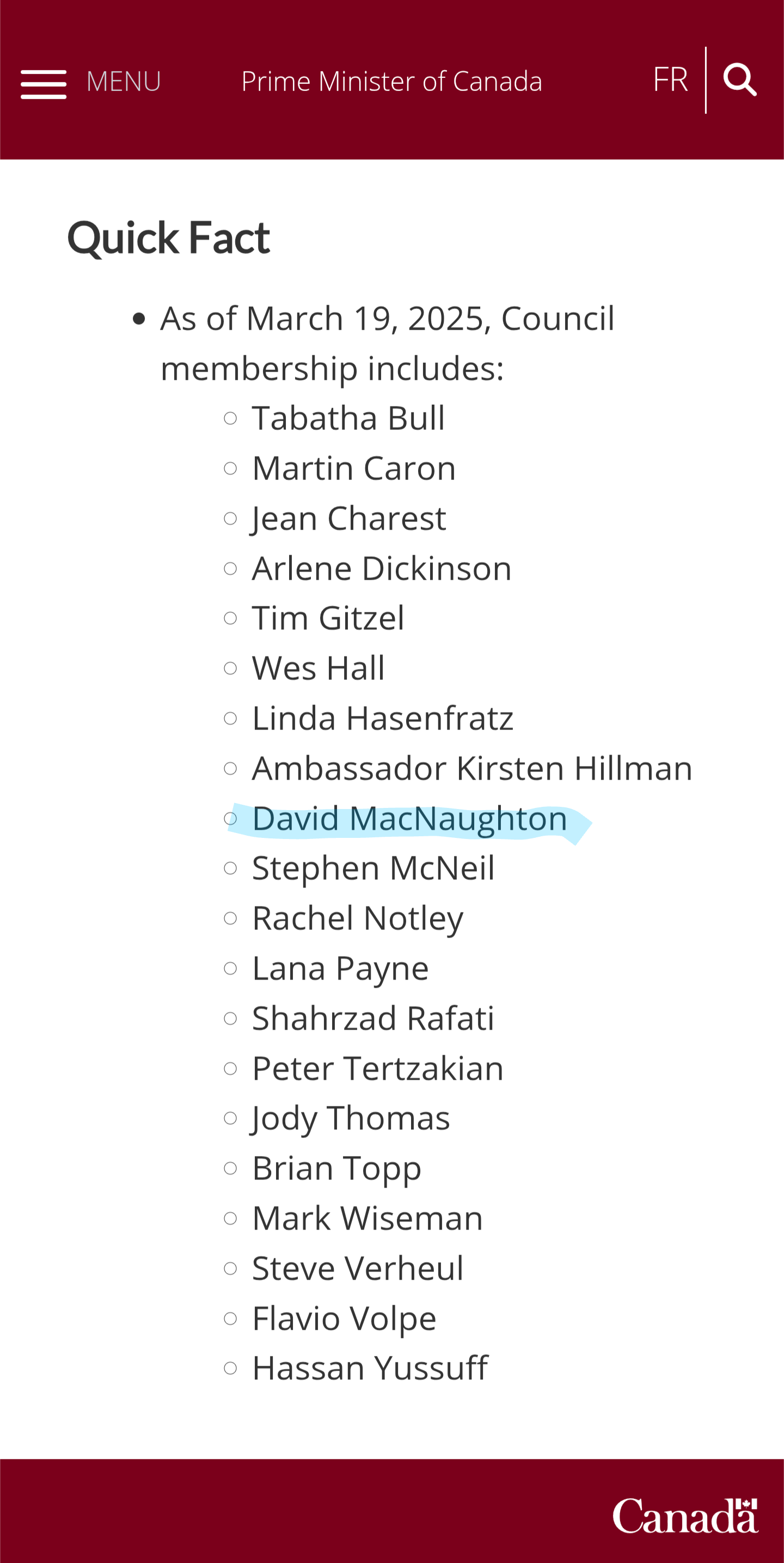
Ontarians hoping that Ottawa might try to reign in Ford’s dictatorship in the aftermath of Bill 5 will be disappointed. In this time of power grabs, land theft and thwarting of the law, Ford has a partner in Carney rather than an adversary.
Both Ford and Carney have wrapped themselves in the flag while appeasing and pleasing corporate interests looking for more integration of Canada into the US. Those interests want no rules, laws or pesky checks and balances to get in the way of their profits.
And now, in Ontario at least, there won’t be any.
